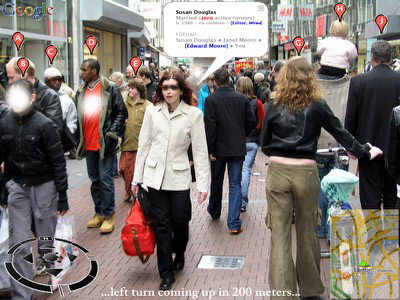One of the nice things about ICon in recent years is how one of the book sellers (Tzomet Sfarim?) arranges a big display of all of the author guest of honor’s books. I think I first noticed this when Neil Gaiman was the GoH, but it persisted when Carol Berg was here, and I noticed it this year with Steven Brust, when I picked up 3 volumes collecting the first seven Vlad Taltos novels. Of course, by the time I got the books it was the end of the con, Mr. Brust had already flown home and I’d missed all his events (although here’s video from his writing workshop).
I hadn’t read any Brust before the con (I’ve owned To Reign in Hell for many years, but haven’t read it), and I seem to think there might have been some missed opportunity or something here, although perhaps not. However, after reading The Book of Jhereg (collecting the first 3 novels – Jhereg, Yendi and Teckla), I’m thinking that every roleplayer of my generation will instantly recognize himself or people he knows in these books.
The countess introduced me to analyzing books through the perspective of roleplaying (I may be repeating myself on this point). She’d look at Tim Powers’ Last Call or Phillip Pullman’s Subtle Knife and identify which character is a PC whose player joined the game in later sessions, or the witch queen who had a player who only showed up for one session, and is therefore fascinating and active in one scene early in the book and just a parrot for some plot point when she reappears later (obviously controlled by the GM). Once you consider this outlook, plenty of other examples in popular literature appear.
But darn, Vlad Taltos lives in a world defined, on an ontological level, by First Edition Advanced Dungeons and Dragons.
See, he’s an assassin, in a highly magical world, also a bit of a sorcerer and a master of witchcraft, and he’s got a familiar (a small, venomous flying reptile called a Jhereg that’s also intelligent and telepathic). He lives in an empire of what are, basically, D&D Elves (tall, thin, extremely long-lived) and when he’s not assassinating or running his criminal operations, he’s hanging out at the floating castle of his best friend, Morrolan the dragonlord (high-ranking noble, sorcerer and warrior), with Morrolan’s cousin Aliera, a sorceress with a soul-destroying sword taller than herself who apparently got sucked through time from the distant past. What’s Vlad’s association with these noble types? Well, he works as Morrolan’s “security consultant”, and all three also have a history of adventuring together in assorted dungeons…
This goes without mentioning Vlad’s wife (also an assassin – they met when she got hired to kill him, as detailed in Yendi) and his pal Kiera the thief, or how everyone he meets who isn’t an undead sorceress (and ally – by this time, I’m already reasoning that being an assassin makes Vlad of evil alignment, and therefore allowed to hang out with Necromancers) has at least some level in some class; and yes, it feels very obvious that nobody in Jhereg has a job or a profession – they have character classes, and they do what they have to do not to earn a living but to gain XP.
Now, I shouldn’t be surprised by this really, because I recall reading an interview with Brust in Dragon magazine many years ago, and he did say there that Vlad started out as a character in a D&D campaign, but it’s pretty shocking to see how artificial it all feels when presented as a world, and how clear it feels that Vlad is played by the guy who wants character development and gives his dude neat little quirks for a personality, while his buddies go all-out munchkin trying to create Elric (but a cheerful sort of Elric!) or an Anime princess.
And you also understand that the only reason Vlad and other humans (or “Easterners”) can match the far more long-lived and experienced Dragaerans (=elfs) is that they’ve got level limits.
I will note that with that reading (this is fic about a high-level AD&D campaign character) to explain the artificiality, I could get on with enjoying the story, which is enjoyably brisk-paced and delivered in a sarcastic Zelazneyesque first person narration (now Zelazney – there’s someone who writes like a roleplayer… which he was).
Vlad’s story does take an interesting twist in the third book – Teckla – which eschews the use of all his high-level buddies and focuses on domestic and social troubles as Vlad’s wife gets involved with a bunch of revolutionaries and he spends a lot of time angsting and struggling against having his political awareness expanded, between dodging assassination attempts – it’s as if Brust decided to suddenly inject Real People into Vlad’s world. While a very intriguing development, I suspect it will be back to high fantasy and dungeoneering in later books: Vlad’s cool assassin character type comes perilously close to crumpling like a soggy cardboard cutout when taken too far out of his AD&D milieu.

